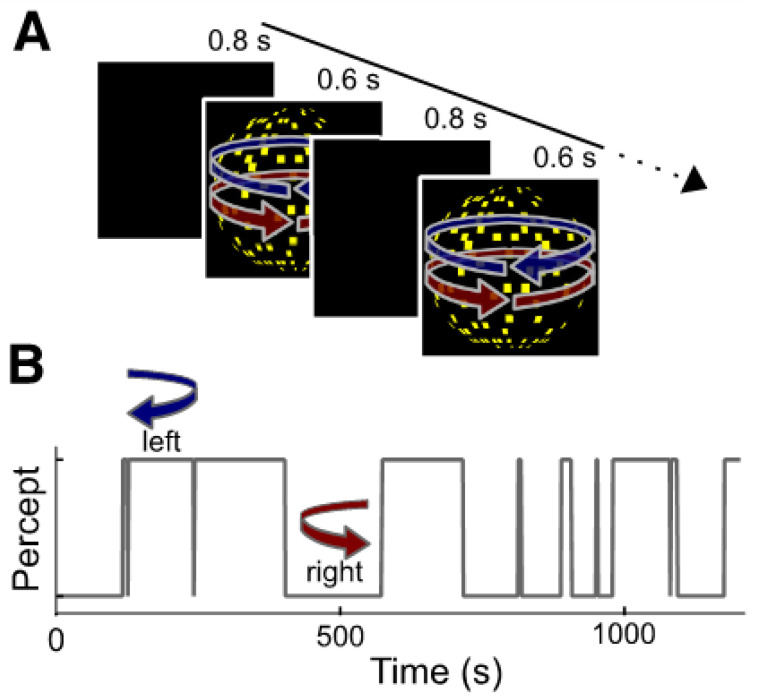Figure 1.
(A) A typical trial of the Random Dot Kinematogram (RDK) task. Ambiguous dot kinematogram are presented repeatedly for 600 ms interleaved by a blank screen of 800 ms duration. The sphere can be perceived as rotating either leftward or rightward. Participants are asked to report the perceived direction of the rotation by making a button press. (B) The perceptual time course from an example participant. The stabilizing effect of endogenous predictions are automatically built up during intermittent presentation of the ambiguous stimulus, this results in participants tending to have the same percept across successive presentation cycles. The figure is replicated with permission from Schmack et al. [9].

